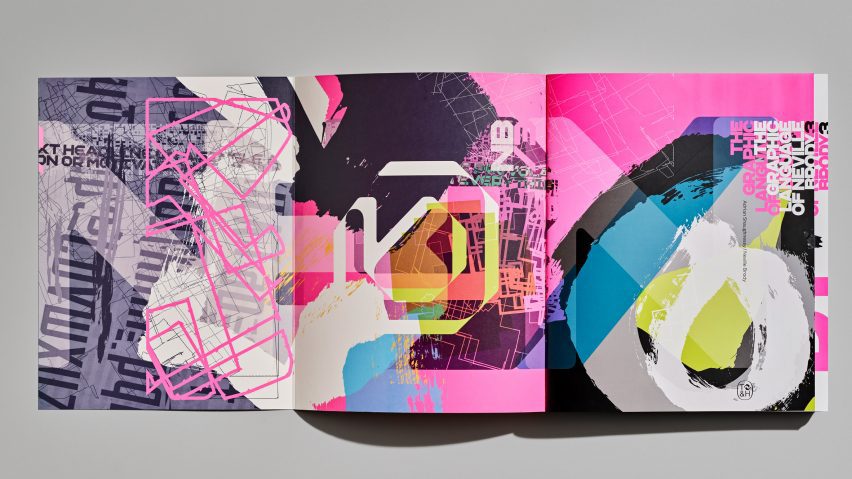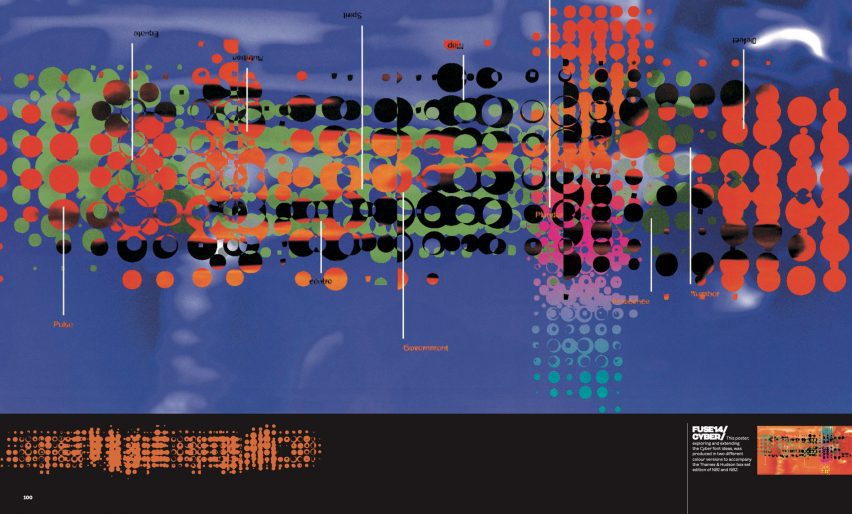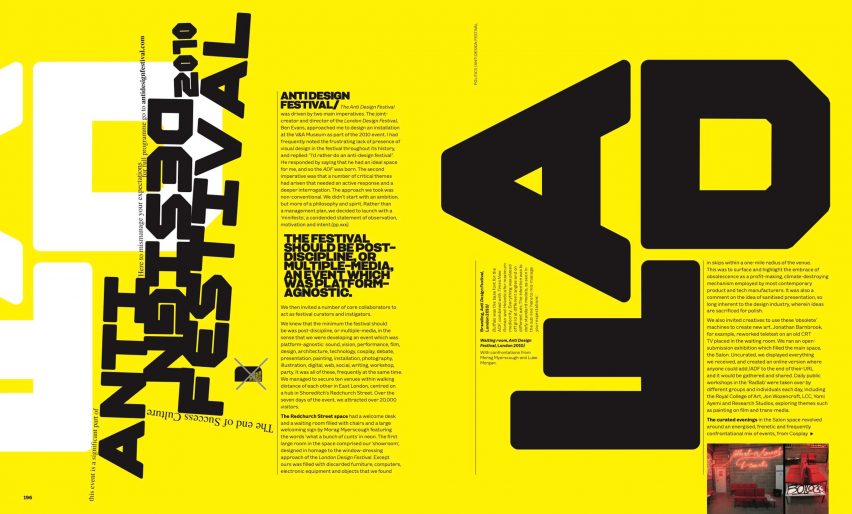
Digital content is all "fed through the same sausage machine" says Neville Brody
The shift from printed media to digital has led to the death of editorial expression in graphic design, according to British designer Neville Brody.
Brody, a leading figure in graphic design and typography, told Dezeen that digital media has created a fundamental shift "from expressing content to just delivering content".
"When we shifted from print to digital, I think people just saw it as a material shift," said the Brody Associates founder. "I don't think they realised the way we engage with content would shift so dramatically."

"We don't have that freedom of editorial expression any more," he said.
"All content is fed through the same sausage machine."
"An appeal for drama and exuberance"
Brody spoke to Dezeen following the release of his first book in nearly three decades, The Graphic Language of Neville Brody/3.
The 352-page volume showcases Brody's work for clients including Coca-Cola, Christian Dior and Channel 4. But is also a piece of design in itself, featuring experimental graphics that bring a new dimension to these projects.
The designer describes it as a manifesto. "It's an appeal for drama, expression and exuberance," he said.

The industry shift, according to Brody, came when the function of graphic design changed.
Instead of magazines, posters and record covers, which centred around the dynamics of word and image, the world of graphic design pivoted towards content platforms and digital strategy.
As a result, designs were required to work with any imagery, at any scale.
Graphics "to disrupt the journey"
"Design is there to do the opposite of what it used to do historically," Brody said.
"Now it's supposed to smooth the journey, whereas in the past it was there to disrupt the journey," he stated.
"These days, organisations don't want the journey disrupted. It's all about speed, which means decreasing complexity. A complex image doesn't work, because it's non-scalable."

Brody first rose to prominence in the 1980s as art director for cult magazine The Face, before moving into commercial graphic design and typography.
These early works were the focus of his first two books, which were published in 1988 and 1994.
With his latest publication, which has been six years in the making, Brody hopes to provoke a new conversation about the potential of graphic design to offer "a living experience".
Editorial and content are daringly juxtaposed, leaving virtually no blank space. Memorable spreads include those dedicated to a 2009 edition of fashion magazine Arena Homme + and a chapter dedicated to typography magazine FUSE.

Brody believes a similar experience could be created in digital media, but would struggle to survive in today's market.
Bringing editorial approach online
"Bringing an editorial approach to an online environment could be amazing," he said. "We've done some experiments in the past and it's so exciting."
"But it's not a dynamic that works today, when you're only as relevant as the content you put up," he continued.
The designer believes there is also potential for digital media to embrace motion graphics and moving image, taking them out of the "controlled environment" of social media platforms.

The ultimate goal of graphic design, in Brody's opinion, is to take the viewer on a journey through content.
"Graphic design is friction," he added. "It changes the purpose."
"Instead of just delivering a user to a sale or to something that they might share, it tries to engage them to think about the content in a different way."
Book photography is by Nick Rochowski. All graphic design is by Neville Brody.